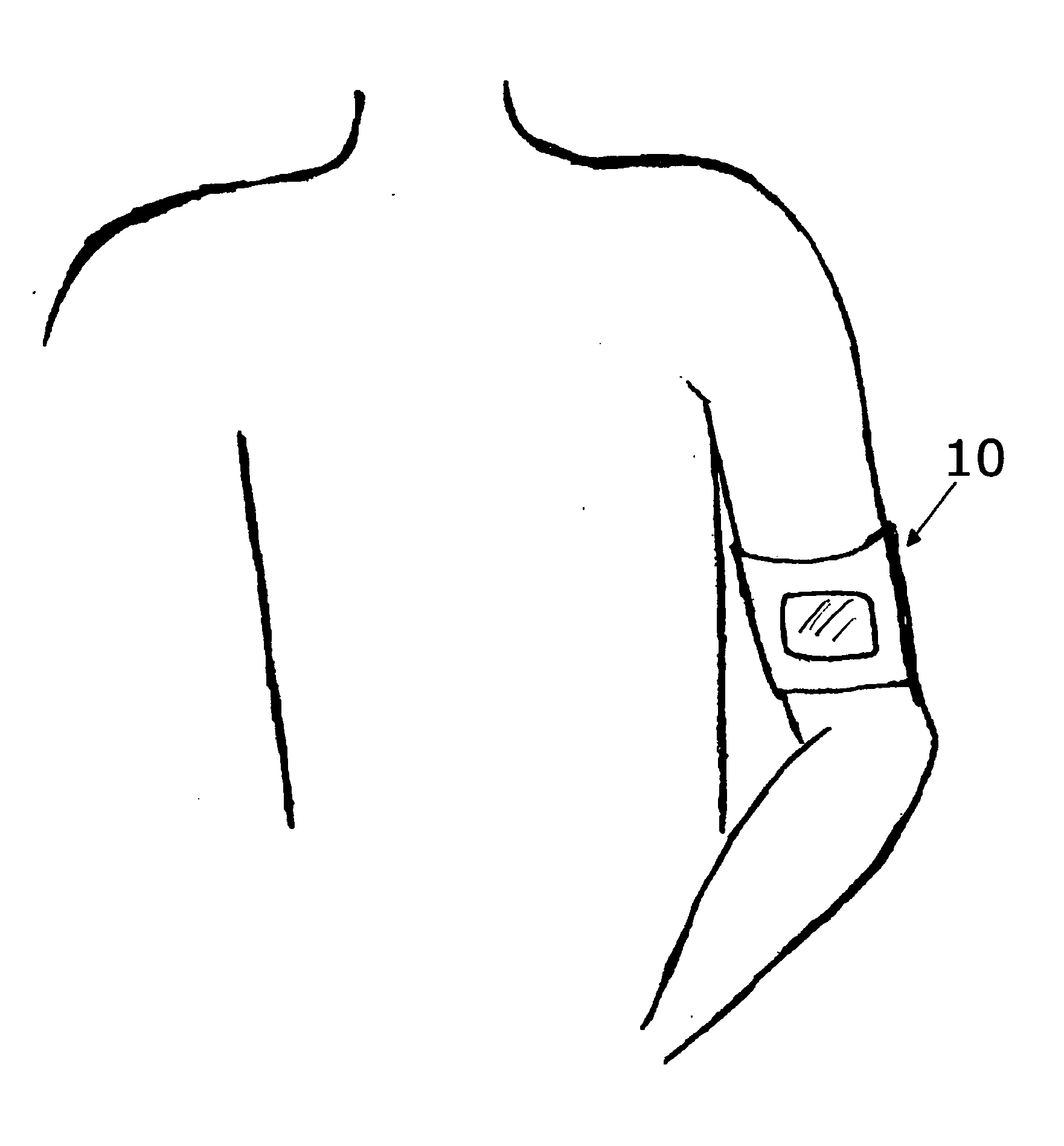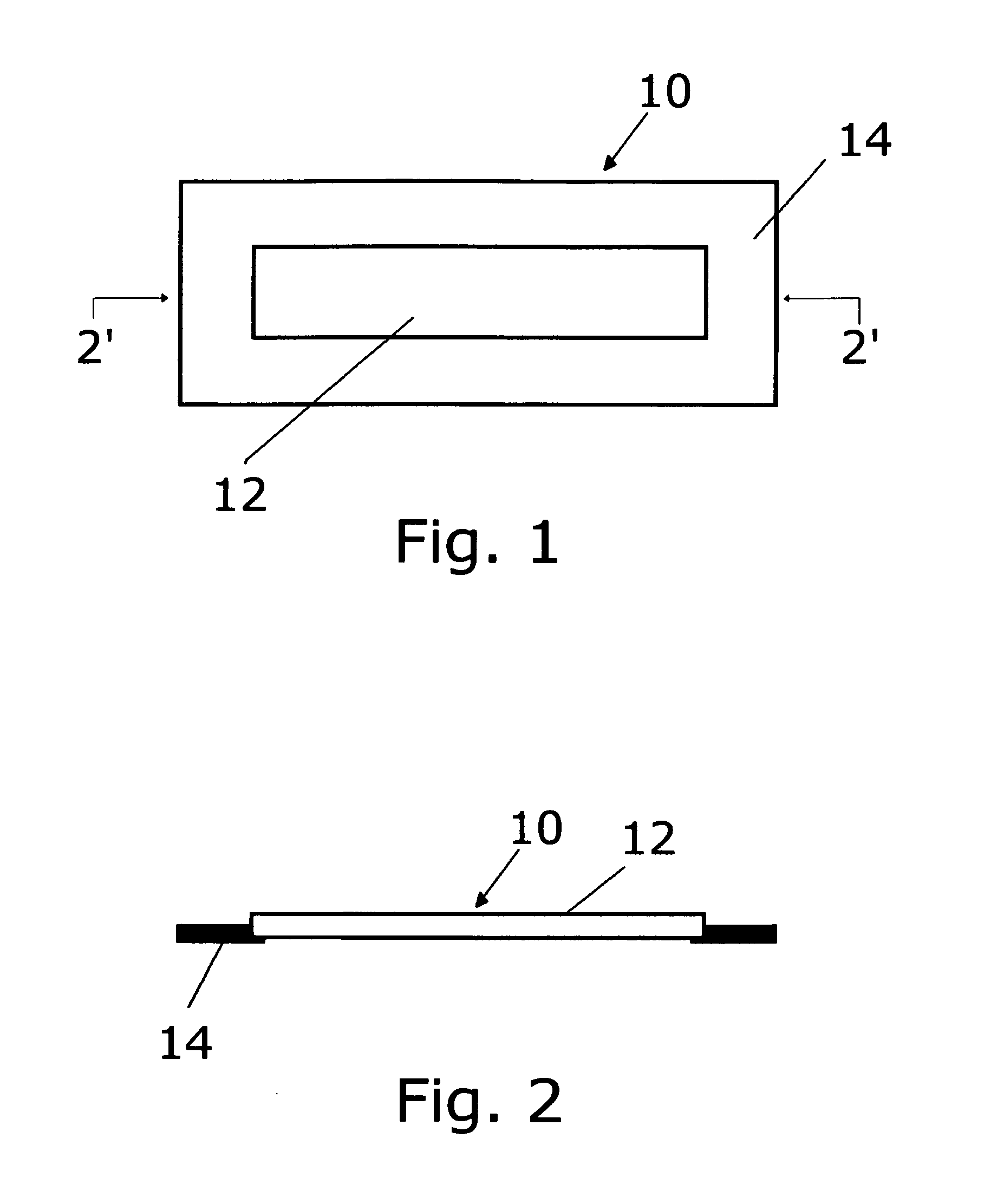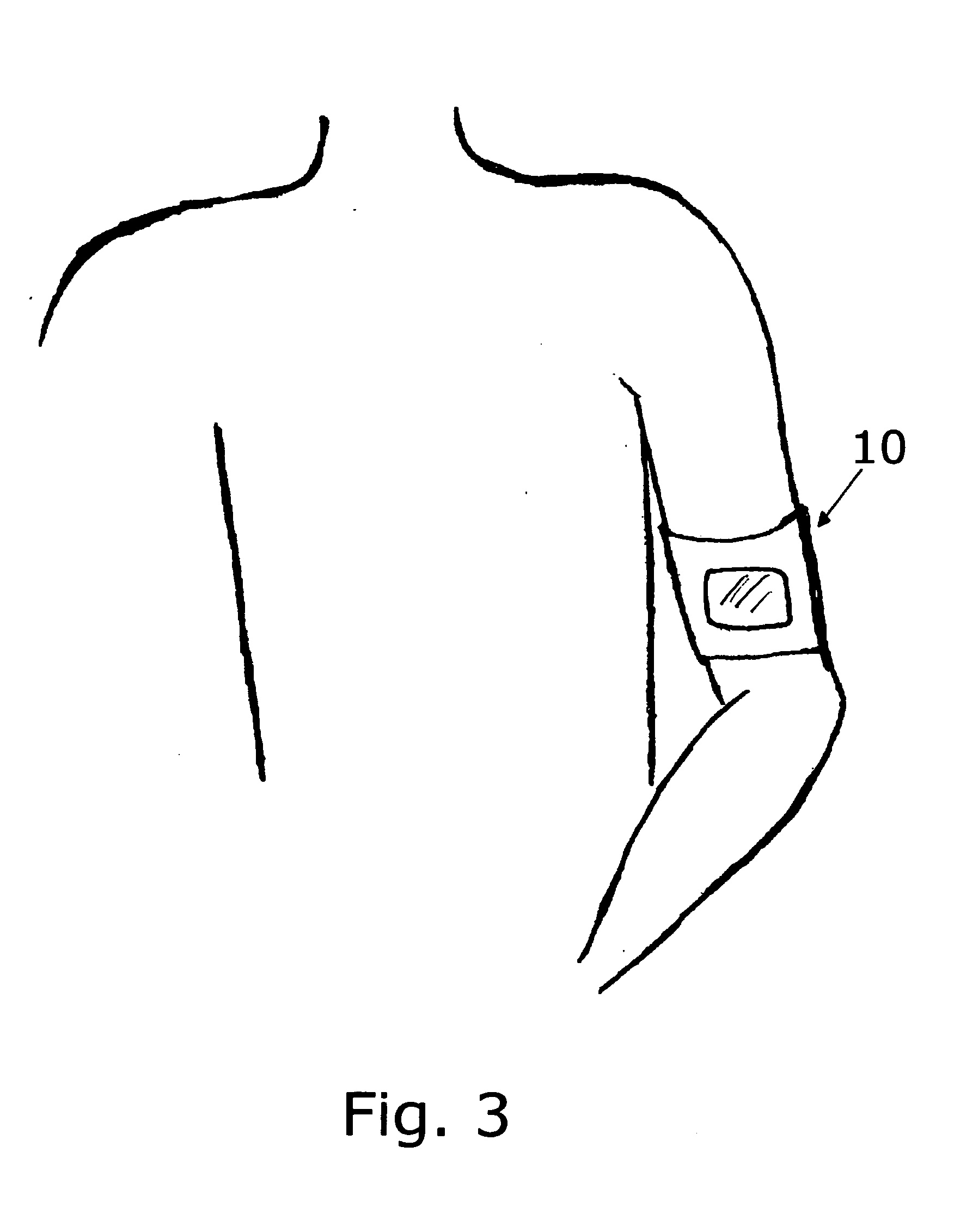Color change wound dressing
a wound dressing and color change technology, applied in the field of wound care dressings, can solve the problems of tearing the wound, leaving fibrous fragments in the wound, and the number of major problems encountered in the present day wound dressing, and achieve the effect of maintaining its adhesive qualities and strength
- Summary
- Abstract
- Description
- Claims
- Application Information
AI Technical Summary
Benefits of technology
Problems solved by technology
Method used
Image
Examples
Embodiment Construction
[0029]The best mode and the preferred embodiment of the novel wound care dressing is shown generally in FIGS. 1 through 3.
[0030]FIG. 1 illustrates a wound care dressing or sponge 10 formed with an inner porous polyvinyl acetal sponge or foam material body 12 with a substantially planar top and bottom surface having a thickness ranging from about 1 mm to about 3 mm in thickness, preferably about 2 mm in thickness. It is also envisioned that polyurethane foam, polyurethane ester foam, polyurethane ether foam and polyethylene foams could be used providing the same are properly cleaned to remove the foaming agent and open up dye receptor binding sites. An outer adhesive section 14 is secured to a flat surface of the sponge body. In the preferred embodiment, the polyvinyl acetal material of the body 12 is about 99.5% by weight. A gram positive Methelyne Blue dye of about 0.025% by gram weight is bonded to the sponge material and a gram negative Gentian Violet dye of about 0.025% by gram ...
PUM
| Property | Measurement | Unit |
|---|---|---|
| thickness | aaaaa | aaaaa |
| thickness | aaaaa | aaaaa |
| temperature | aaaaa | aaaaa |
Abstract
Description
Claims
Application Information
 Login to View More
Login to View More - R&D
- Intellectual Property
- Life Sciences
- Materials
- Tech Scout
- Unparalleled Data Quality
- Higher Quality Content
- 60% Fewer Hallucinations
Browse by: Latest US Patents, China's latest patents, Technical Efficacy Thesaurus, Application Domain, Technology Topic, Popular Technical Reports.
© 2025 PatSnap. All rights reserved.Legal|Privacy policy|Modern Slavery Act Transparency Statement|Sitemap|About US| Contact US: help@patsnap.com



